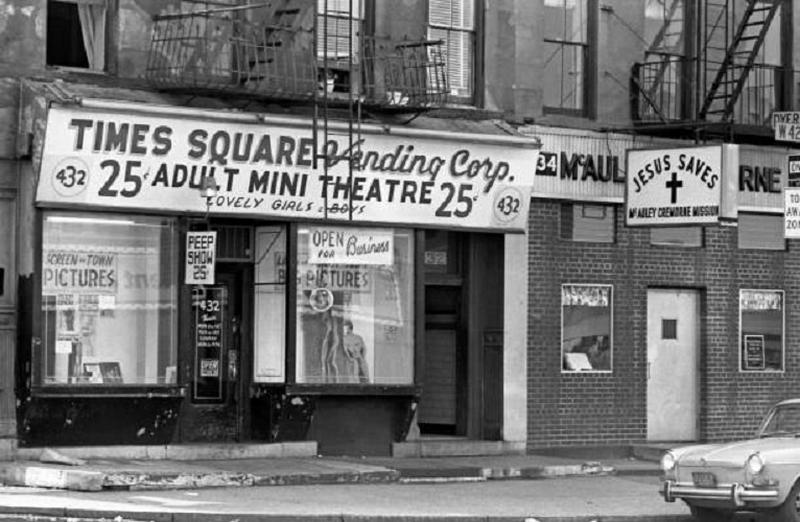Times Square In The 1970s
By | February 16, 2022


By 1960, It Already Had A Bad Reputation
The 1950s and ‘60s only made things worse, although there were failed efforts in the 1950s to thwart the advance of sex-related businesses. A front-page article in The New York Times in 1960 called the area “the worst in town” in 1960, detailing the vices of Times Square: vandalism, loitering, stores selling knives and sexually explicit materials, and, of course, grindhouse theaters.
In 1966, the twenty-five-cent peep show was introduced, and this simply helped to support the seediness of the area. When the economy crashed in the early 1970s, many businesses left Times Square. Retail establishments closed and the hotels were converted into SRO (single-room occupancy) dwellings which attracted the destitute. Although the Theater District did survive, it was surrounded by strip clubs and porn cinemas

The Seediness Was Right Out In The Open
The area was rife with con games, open drug trade, and alcoholism. Despite the large numbers of police officers, crime flourished in the subway and underground passages of the Port Authority Bus Terminal. By the end of the 1970s, the most felony and crime complaints were recorded in Times Square. During this time, 42nd Street got the nickname “the Deuce” and Eighth Avenue became known as the Minnesota Strip because of the number of prostitutes who walked it. So-called hot-sheet hotels such as the Elk charged hourly rates as low as $5 an hour (or you could rent a single room for the night for $40). These hotels had no phones, televisions, or air conditioning and had communal bathrooms.

A Lot Of Money Changed Hands
In 1981, Rolling Stone called West 42nd Street the “sleaziest block in America.” People exchanged money, drugs, and other payment for sexual favors, as the central location helped to fuel the sex market. Because of the traffic, clients were able to solicit prostitutes without attracting much attention. There was, of course, a lot of money to be made from these activities. For example, the weekly gross of peep shows in 1978 was estimated to range between $74,000 to $106,000 by CUNY researchers. That’s not to say that it was all bad; in the 1970s, Jimmy Glenn opened the Times Square Boxing Club and TKTS got its start selling same-day Broadway tickets. There were also people trying to turn Times Square around, including the WAP (Women Against Pornography) and the Guardian Angels, who were a group of volunteers that was founded in 1979 to combat the violence on the subways.

Everything Started To Change In The 1980s
The conditions at Times Square began to turn around in 1983 when Mayor Ed Koch promised $1.6 billion to help redevelop Times Square and rid the area of prostitution and drugs. By August of that year, arrests in Times Square had tripled, and by the end of the year, 17,000 sex workers had been arrested. In 1985, the city promised to hire 1,000 additional police officers, spending $50 million. By the ‘90s, Times Square had begun to be transformed once again.
